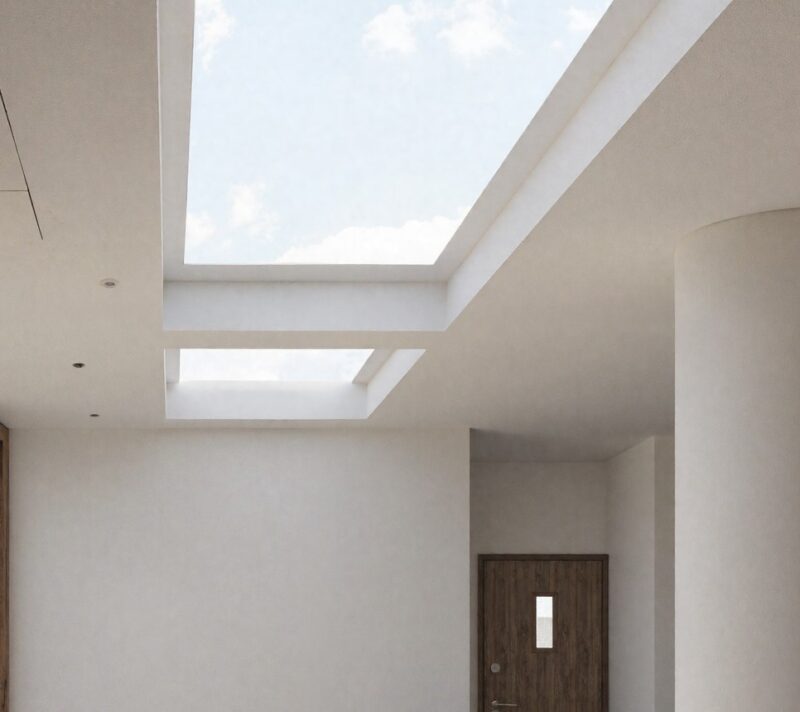Creating a light-filled home doesn’t always require knocking down walls or committing to extensive building projects. For homeowners looking to brighten up dark rooms, there are practical, visually appealing solutions that add daylight without disrupting daily life. One such feature is the roof lantern, an elegant and effective way to introduce natural light from above, giving even the gloomiest corners a fresh, airy feel.
How Roof Lanterns Transform Interior Spaces

Roof lanterns sit atop flat or pitched roofs, allowing sunlight to pour in from multiple angles. Unlike flat skylights, their elevated, lantern-style structure maximises exposure to daylight throughout the day. This architectural shape captures light from above and across different sides, meaning even spaces with limited exterior wall access can benefit.
One of the most popular benefits of installing roof lanterns is the striking sense of openness they create. By drawing the eye upwards, these structures help rooms feel taller and more spacious. They eliminate the reliance on artificial lighting and make a strong visual statement while maintaining a minimalist design.
In the early stages of your planning, you might consider roof lanterns to increase natural light and transform an underused or uninspiring area of the home into a standout space. They suit a range of environments, from kitchens and dining areas to converted lofts and extensions, all without resorting to structural overhauls.
Where Roof Lanterns Work Best
Certain rooms naturally benefit more from overhead light, making them ideal candidates for a roof lantern. Kitchens, for example, thrive on direct daylight, particularly over worktops or islands where task lighting is important. Natural light improves visibility for cooking and helps create a vibrant space for entertaining or family meals.
In hallways or stairwells that typically lack windows, a roof lantern introduces overhead brightness, bringing warmth and depth to what might feel like transitional, utilitarian spaces. It can turn an ordinary corridor into a design feature.
Home offices also see practical benefits. A well-placed roof lantern over a desk area supports alertness and productivity by distributing soft, even light. For bathrooms, roof lanterns allow daylight into private areas without compromising seclusion, frosted or textured glazing lets in brightness while maintaining discretion.
Easy Installation Without Heavy Disruption
One of the most appealing aspects of roof lanterns is how quickly they can be installed with minimal fuss. The process is relatively straightforward on flat roofs: a section is cut, a curb is constructed, and the pre-assembled unit is secured in place.
Many systems today are modular and arrive partially built, which speeds up installation time. This reduces noise, dust, and general disruption inside the home. A professional installer can complete most projects within a few days, and your living area can remain largely unaffected.
Professional fitting is advised to ensure watertight sealing, thermal efficiency, and structural safety. While DIY is possible, poor installation risks issues such as leaks or drafts, especially if the unit is not correctly aligned or insulated.
Environmental and Maintenance Advantages
Modern roof lanterns are designed with energy efficiency in mind. Many include insulated frames and glazing options that help manage indoor temperatures throughout the year. Ventilation panels are often incorporated to allow heat to escape naturally, preventing stuffiness during warmer months.
For hard-to-reach roofs, self-cleaning glass is a practical feature that reduces maintenance. These treatments help rainwater rinse away dirt, keeping the surface clear and maximising light transmission without constant upkeep.
Roof lanterns reduce the need for artificial lighting during daylight hours, reducing electricity consumption. This saves on bills over time and supports a more eco-conscious way of living by lessening reliance on electric lighting.
Balancing Cost With Long-Term Value

The cost of installing a roof lantern varies depending on design, materials, and installation complexity. While a custom design may carry a higher upfront cost, the long-term value it brings to the home in terms of aesthetics, usability, and energy efficiency often makes the investment worthwhile.
Beyond enhancing comfort, having features that increase natural light in a home are often attractive to potential buyers. A room bathed in natural light feels more luxurious and welcoming, and many property experts suggest such upgrades can support resale appeal even if exact value increases aren’t easily quantified.
Roof lanterns strike a strong balance between impact and practicality compared to other daylighting solutions. While extensions or floor-to-ceiling glazing might deliver similar light levels, those options require far more planning and expense.
A Brighter Outlook for Your Home
If your goal is to make a dark space feel more open and liveable, roof lanterns offer a versatile and elegant solution. They’re suitable for a wide variety of settings, come in designs to suit every style, and can often be installed with minimal disruption. From boosting natural light to improving the look and feel of your interior, they offer real, lasting impact for homeowners who want to upgrade without renovating from the ground up.


